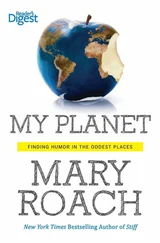The Soyuz seats, like race-car seats, have side restraints along the head and the length of the torso. Which makes them safer, unless you need to get out in a hurry. “I had it all planned out,” Expedition 16 commander Peggy Whitson told me in a phone interview. “I’m thinking, ‘I’m going to unstrap and brace my hand here, and then lower my feet,’ and of course none of that worked out. I just fell to the bottom with my head and shoulders in So-yeon’s seat and my legs up and across the hatch.” Gravity was not helping. “After six months, you forget how heavy things are. Like, yourself.” You also, after months of weightlessness, forget how to use your legs. “Your muscles don’t remember what to do.” And astronauts have no pit crew to rush over and help them free of the wreckage. [32] Whitson and her crewmates, much to their surprise, did have help. Not long after touchdown, she felt someone pull her from the capsule. “I was like, ‘Cool, the search-and-rescue guys are here already.’ They laid me on the ground near the cesium altimeter. Which seemed odd, because we were always told to stay away from the cesium altimeter. So I start looking at the SAR guys…. One of them, literally, was wearing what looked like a burlap sack sewn into pants. They were Kazakh locals.” One spoke some Russian. He asked Whitson’s crewmate Yuri Malenchenko, “Where did this boat come from?” (The fire had consumed the parachutes.) “Yuri’s like, ‘No, this is a spacecraft. We were up in space.’ And the guy says, ‘ Nu, ladna, ’ which is kind of like ‘Fine, whatever.’”
Fortunately, the wind was blowing away from them and the grass fire soon burned itself out.
Worried that NASCAR-style shoulder bolsters might dangerously extend the time it takes an astronaut to get out of the capsule, Gohmert and his colleagues ran some simulations with head bolsters only. For these they used crash test dummies—or “mannequins,” as Gohmert calls them, causing me to picture them taking their hits in department store outfits. It was a bad business. Gohmert described the slow-motion video footage to me. “The head stayed stationary and the body kept moving. We were actually concerned about the mannequin being okay.” As a compromise scenario, the shoulder bolsters are still there but have been scaled down.
NASCAR seats are fitted to each driver, but that’s too expensive to do for each astronaut. The Soyuz seats employ a compromise: a molded seat insert fit to each cosmonaut’s body. But the mold still has to fit inside the seat, which ultimately limits the size of the cosmonaut. “The Russians have a much narrower range of crew sizes,” Gohmert says wistfully. At the time we spoke, seats (and suits) were required to fit bodies that fall anywhere between 1st percentile female to 99th percentile male. That’s 4 feet 9 to 6 feet 6, though standing height is the least of it. A seat system that supports and restrains the entire seated body has to fit buttock-knee lengths from 1st to 99th percentile, and ditto seated chest heights, foot lengths, hip breadths, and seventeen other anatomical parameters. [33] No one is excluded from the astronaut corps based on penis size. It is assumed that a man will fit one of the three sizes available in the condom-style urine collection device hose attachment inside the EVA suit. To avoid mishaps caused by embarrassed astronauts opting for L when they are really S, there is no S. “There is L, XL, and XXL,” says Hamilton Sundstrand suit engineer Tom Chase. This was not the case during Apollo. Among the 106 items left on the moon’s surface by Neil Armstrong and Buzz Aldrin are four urine collection assemblies—two large and two small. Who wore which remains a matter of conjecture.
This wasn’t always the case. Apollo astronauts had to be between 5 feet 5 and 5 feet 10. It was a simple, inflexible cutoff, the governmental version of the sign by the amusement park ride: MUST BE THIS TALL TO RIDE. That meant that a lot of otherwise qualified candidates were kept out of the space program because of their stature. To today’s PC-sensitized mind, that smacks of discrimination.
To Dustin Gohmert, it smacks of common sense. As things stand, NASA has to spend millions of dollars and man-hours making seats lavishly adjustable. And the more adjustable the seat, generally speaking, the weaker and heavier it is.
A further complication for the astronaut, as opposed to the race-car driver: He’s got vacuum cleaner parts attached to his suit [34] And a diaper. Though the lack of a diaper doesn’t mean race-car drivers don’t pee in their suits. “People do it all the time,” reported Danica Patrick in an interview in Women’s Health . Except Danica. “I tried last year.” She explains that this was during, appropriately enough, a yellow flag (the signal to slow down and follow the pace car, usually because of an accident). “I was like, ‘…Just do it.’” No Nike sponsorship for Danica!
—hoses, nozzles, couplings, switches. To be sure the hard parts of a suit don’t injure the soft parts of an astronaut in a rough landing, F will be wearing a suit simulator: a set of rings duct-taped in place around his neck, shoulders, and thighs. The rings are facsimiles of the mobility bearings, or joints, of a spacesuit. (Tomorrow’s cadaver, presently thawing, [35] How do you tell when a cadaver is done defrosting? Bolte sticks a temperature transducer down the trachea. When the internal temperature passes 60 degrees, it’s ready. Lacking that, a “thermometer up the rectum” will give you a good idea, as will moving the arms and legs to see if the joints move freely. Two to three days (in a refrigerator, please) usually does it.
will be wearing a vest with “umbilicals”—life support hoses and couplings—mounted on it.) One specific concern today is whether, on a sideways touchdown, a mobility bearing might collide with the seat’s shoulder bolster and be driven into the astronaut’s arm with enough force to break a bone. [36] Beware the hard things in between. The April 1995 issue of the Journal of Trauma includes a case report of a man whose pipe was between his BMW’s airbag and his face when the bag deployed. A piece of the stem shot into his eye, resulting in “a ruptured globe.” The author, a Swiss physician, has a keen globe for detail, noting that “there was tobacco all over the floor” and that the injury was similar to those seen “after a thrust of a pointed cow horn.” The paper concludes with an exhortation to “behave appropriately”—no “drinking from cups,…holding articles on the lap, or wearing spectacles while driving.” Not to thrust too pointed a cow horn, but wearing one’s eyeglasses while driving surely prevents more injuries than it causes.
Gohmert explains how ring joints work, how they enable an astronaut to raise an arm. A pressurized spacesuit is a heavy-duty body-shaped balloon—almost more of a tiny inflated room than an article of clothing. Fully pressurized, it’s all but unbendable without some sort of joints. The current suit prototype has metal shoulder rings that twist back and forth against each other, enabling astronauts to rotate their entire arm up and down, like old-fashioned doll arms. This is my analogy, not Gohmert’s. Earlier in the conversation, I likened NASA’s differently sized, individually selected spacesuit components to the recent development of mix-and-match bikini bottoms and tops. “I haven’t bought one,” Gohmert was careful to point out, “but that sounds right.”
JOHN BOLTE ISN’T 99th percentile, but he’s pretty big. When he drove my crappy little rental car, I swear he had to hunch forward over the steering wheel to fit in it. He was reading texts as he drove, getting updates on the score of his older son’s ball game. I was relatively certain that if he ran off the road, the car would crumple around him and he’d step from the wreckage unfazed, going “Bottom of the eighth, nine to three!”
Читать дальше












